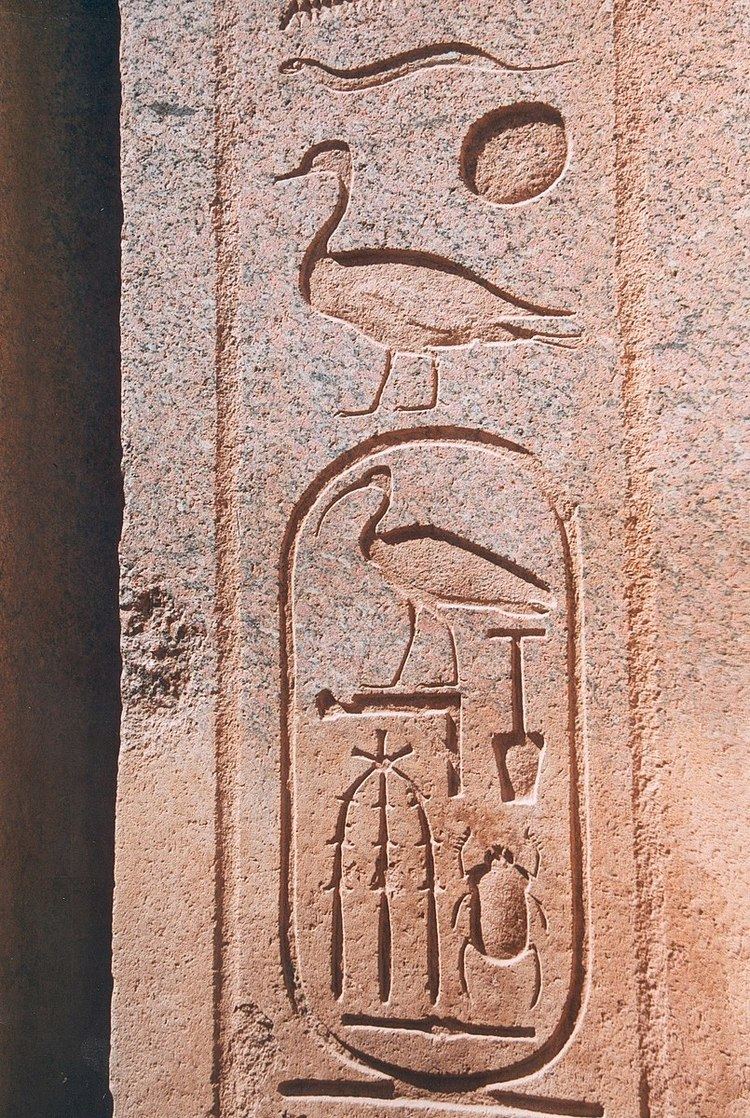 | ||
In Egyptian hieroglyphs, a cartouche /kɑːrˈtuːʃ/ is an oval with a horizontal line at one end, indicating that the text enclosed is a royal name. They came into use during the beginning of the Fourth Dynasty under Pharaoh Sneferu. While the cartouche is usually vertical with a horizontal line, it is sometimes horizontal if it makes the name fit better, with a vertical line on the left. The Ancient Egyptian word for it was shenu, and it was essentially an expanded shen ring. In Demotic, the cartouche was reduced to a pair of brackets and a vertical line.
Contents
Of the five royal titularies it was the prenomen, the throne name, and the "Son of Ra" titulary, the so-called nomen name given at birth, which were enclosed by a cartouche.
At times amulets were given the form of a cartouche displaying the name of a king and placed in tombs. Such items are often important to archaeologists for dating the tomb and its contents. Cartouches were formerly only worn by Pharaohs. The oval surrounding their name was meant to protect them from evil spirits in life and after death. The cartouche has become a symbol representing good luck and protection from evil. Egyptians believed that one who had their name recorded somewhere would not disappear after death. A cartouche attached to a coffin satisfied this requirement. There were periods in Egyptian history when people refrained from inscribing these amulets with a name, for fear they might fall into somebody's hands conferring power over the bearer of the name.
Etymology
The term cartouche was first applied by soldiers who fancied that the symbol they saw so frequently repeated on the pharaonic ruins they encountered resembled a muzzle-loading firearm's paper powder cartridge (cartouche in French).
Hieroglyph use of cartouche
In the Rosetta Stone, the cartouche hieroglyph is used for the word "name", Egyptian rn. For the cartouche cut in half, the "half-cartouche hieroglyph", Gardiner's sign listed no. V11, (the cartouche hieroglyph is V10), is used in the Egyptian language for words meaning: "to cut, to divide, to separate". It was the use of cartouches on the Rosetta Stone that was the biggest clue allowing Jean-François Champollion to decipher hieroglyphics.
